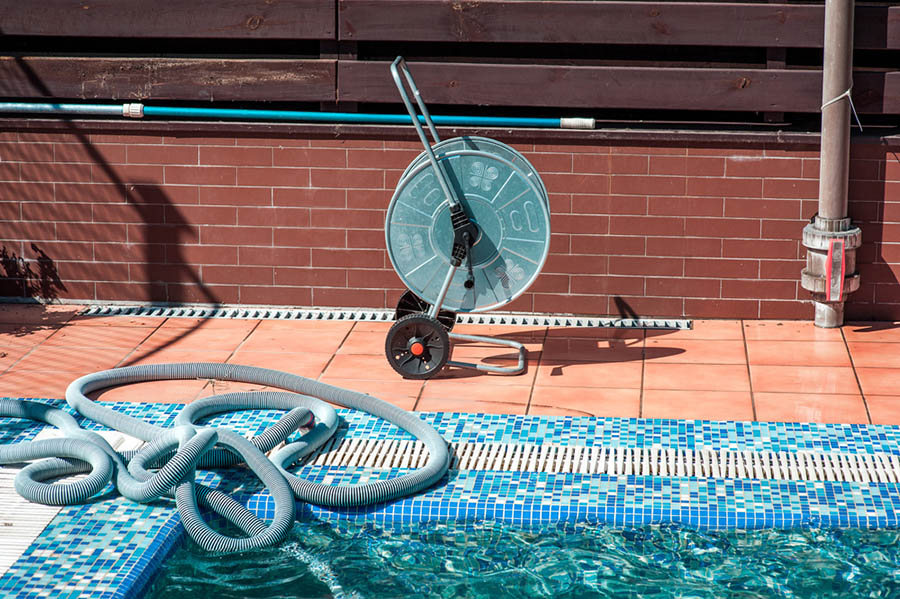Closing steps

3. Scrub your pool clean
Clean your pool:
- Remove debris with a handheld skimmer and/or leaf rake
- Run the pool vacuum
- Scrub away any mold and grime
- Make sure the pool is as clean as possible prior to covering it.
4. Drain some water
Lower the water level in the pool using your filter or a siphon pump. If you have an in-ground pool, the water level should be below the base of the skimmer door. For an above-ground pool, remove the outlet hose from the skimmer basket. Generally, you don’t want the water to come into contact with the pool cover.
5. Drain pumps, filters and other equipment
Drain all of your pumps, heaters, filters, and chlorinators to prevent them from freezing or cracking. Most of them have caps or plugs that can be loosened and removed. All of the residual water must be drained or blown out. A shop vacuum is the best way to accomplish this. You can store the caps and plugs in the filter basket during the winter. For above-ground pools, it’s not quite such a chore; you can simply remove the hoses and the plug at the bottom of the filter.
If you’re concerned that you haven’t removed all of the water, you can always use a pool anti-freeze to prevent problems as the temperature begins to dip.
6. Find storage space
You’ll need a place to store all of your pool accessories, such as diving boards and ladders. You’ll also want to clean them before the next season starts.
7. Have an above ground pool?
If you have an above-ground pool, consider using one of the air-filled rings called pool pillows to keep any water remaining the basin from freezing during the winter. The ring is inflated and tied to the sides of the pool. You don’t need to use a pool pillow for an in-ground pool unless the winters are especially cold and cruel.
8. Chemical float
Give your pool a treat: a chlorine pool floater, or the non-chlorine variety for vinyl pools. This sanitizes the pool and should be tied to the center of the deep end of the pool so that it doesn’t tip over or end up on the steps. If you have a mesh pool cover, you may want to consider using enzymes instead.
9. Get a pool cover
Your pool should be protected from the elements with a cover. Be sure it has no holes or gaps where debris can enter the pool. Solid covers are not recommended; safety covers are the preferred option. Solid covers will allow accumulation of melting snow or rainwater that will need to be removed.
Follow these steps and you should have no unpleasant surprises when it’s once again time for a splash in the shallows or a dunk in the deep.
Want to learn more? Visit our Homeowner resource centre for more articles created specifically to help you navigate homeownership. Or, get an online quote in under 5 minutes and find out how affordable personalized home insurance can be.




